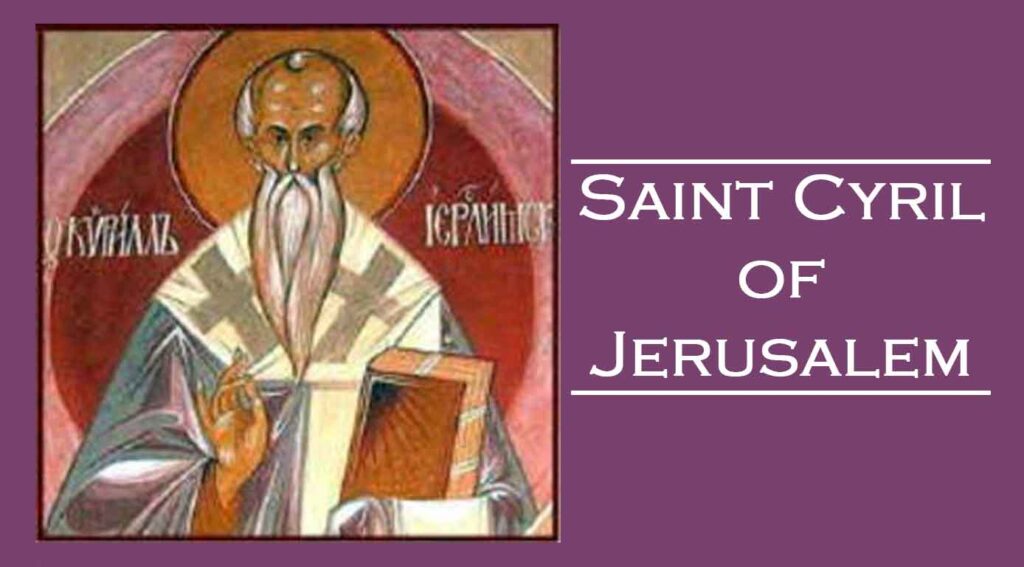1515–1582; Patron Saint of Spain, lacemakers, and those in need of grace, in religious orders, and ridiculed for their piety; Invoked against bodily ills, headaches, and sickness; Canonized by Pope Gregory XV on March 12, 1622; Declared a Doctor of the Church on September 27, 1970
Saint Teresa of Ávila, also known as Saint Teresa of Jesus, was born Teresa Sánchez de Cepeda y Ahumada in Ávila, Spain, to very faithful Catholic parents. Her father, Sánchez, had been married previously. He and his first wife, Catalina, had three children together, one daughter and two sons. After Catalina died, Sánchez married Beatriz with whom he had nine children, seven boys and two girls. Teresa was the third child of her father’s second marriage. By age six or seven, Teresa began to think seriously about her life of faith, desiring to become a saint and even a martyr. When Teresa was only twelve, her mother died, leaving her heartbroken.
For the first three years after their mother died, Teresa’s older sister cared for her at home. During that time, in addition to Teresa’s growing interest in her reading, she became very close to one of her cousins. That particular cousin was very worldly and loved to tell stories that were far from virtuous. At one point, over a period of a few months, Teresa and her cousin spent much time together, gossiping and speaking about many worldly matters. Though Teresa worked hard to keep her virtue strong, the influence of her cousin slowly did her much damage. In 1531 she revealed these struggles to her older brother and father, and they sent her to the nearby convent boarding school, Our Lady of Grace, where she could have the good influence of the nuns.
Teresa moved into the boarding school when she was sixteen years old. The first eight days at the monastery were very difficult for her as she slowly turned her mind back to God and away from worldly ideas. She greatly feared that the sisters would discover how worldly she had become over the previous three years, which caused her much distress. After the first eight days, she began to return to her pursuit of virtue, her peace of heart returned, and she once again began to desire to be a saint. The nuns were a great blessing to her, and she was most grateful for their holy influence. She began to think about being a nun but fought that desire out of fear.
In 1532, Teresa departed the monastery because of a serious illness and went to her sister’s house to be cared for. She was now more prepared to remain firmly grounded in her life of faith, understood how important good friendships were, and had discovered how dangerous worldly ones were.
After returning home, Teresa spent about three months struggling with the idea of becoming a nun. She knew it was the safest road for her to travel but was fearful of the decision, and the devil did all he could to convince her she could never be a good nun. This interior battle she endured ended with her firm resolve to become a nun. However, when she told her father about this desire, he strongly opposed it. He was not going to allow his most beloved daughter to depart from him.
At the age of twenty, despite opposition from her father, Teresa and her brother Rodrigo decided to enter religious life. They left in the early morning without anyone else knowing. Teresa entered the Carmelite Monastery of the Incarnation at Ávila on November 2, 1535. She recalls that the decision was quite painful for her as she left her father and family behind. Once she entered the convent, she realized that persevering through that painful decision was exactly what God wanted, and her resolve brought peace to her heart.
After making her first profession of vows a year later, Sister Teresa became quite ill and remained so for a few years. At one point, she lay in a coma for four days and was thought to be dead. During her illness, she spent time recovering at her sister’s home, stopping also at her uncle’s. Her uncle gave her a book on a particular method of prayer called “the prayer of recollection,” and this book became one of her greatest treasures. After returning to the Convent of the Incarnation, she consumed that book and began practicing the prayer of recollection, which was a method of seeking God’s presence within her own soul. Sister Teresa grew deep in prayer, experiencing what mystics have called “the prayer of quiet” and even “the prayer of union” at times. Her continuous physical pain became a foundation for her prayer, and during those many months of solitude and suffering, her daily practice of prayer brought forth great fruit. In 1542, she miraculously recovered from her illness and attributed her recovery to the intercession of Saint Joseph.
For the next ten years of her religious life, Sister Teresa lived a very ordinary life, not advancing much in prayer. However, in her late thirties, Sister Teresa experienced what might be called her “second conversion.” In 1554, she was passing by a statue of Christ crucified and suddenly was overwhelmed by this image. She was so moved by grace that she encountered the gift of tears. Soon afterward, she read a copy of The Confessions of Saint Augustine, which had a profound impact on her. Augustine helped her to understand that God was within her and that she was avoiding the mystical journey to Him within. Over the next few years, Sister Teresa’s life began to change dramatically. Her prayer deepened, and she experienced many ecstasies and visions. At times, the sisters would see her caught up in ecstasy for lengthy periods of time. They would even see instances when she elevated off the ground in the chapel.
As Sister Teresa began to enter more deeply into her second conversion, she became increasingly aware of the lukewarmness of her own convent, as well as the many other Carmelite convents throughout Spain. Instead of being places of deep prayer, mortification, and recollection, the convents had slipped into worldliness, comforts, and a lack of prayer. As a result, God began to direct her to engage in a reform of the Carmelite Order.
In 1562, Sister Teresa founded the convent of Saint Joseph in Ávila. After gaining episcopal approval and then papal approval, she moved into her new convent in 1563, taking on the role of mother superior and the title of Mother Teresa. For the next five years, she spent most of her time in prayer and writing. She wrote not only new constitutions that governed the reformed Carmelite convent, but she also wrote her book The Way of Perfection, in which she offered clear lessons to her sisters about the journey to holiness on which they were to embark. In her constitutions, she returned the order to practices that included severe penances, prayer, solitude, strict poverty, and separation from the world. Among their penances was the practice of going without shoes, which is why they are called the “Discalced” Carmelites, meaning “without shoes.”
In 1567, Mother Teresa received permission from the Carmelite general to begin founding more convents according to the rule she and her sisters had adopted at Saint Joseph. Over the next several years, she traveled often, founding convents throughout Spain that eventually numbered seventeen. Mother Teresa also received permission to found two monasteries for men with the help of her new spiritual director, Saint John of the Cross.
Mother Teresa’s work was not, however, well received by everyone. In 1576, members of the unreformed Carmelites had a general chapter meeting and voted that Mother Teresa should stop all reforms and retreat into “retirement.” Tensions remained high, and the unreformed Carmelites continued to oppose Mother Teresa’s reforms until the pope decreed the two to be separate provinces, eliminating the power struggles between them.
Mother Teresa authored four major books, several minor works, at least thirty-one poems, and 458 letters that still exist. Her writings are among the most profound spiritual writings in the history of the Church, earning her the title Doctor of the Church.
As we honor this great saint and mystic, ponder the fact that she needed to enter into a second conversion. Though she was a nun with an established life of prayer, she was not entering into the depth of prayer to which she was called. When she discovered this fact, God took her into her own soul and she met Him there. Through her, God left a profound and lasting spiritual legacy for the Church.
Source: https://mycatholic.life/saints/saints-of-the-liturgical-year/october-15st-teresa-of-vila/








